Gateway Arch National Park features one of America’s most recognizable structures. Nearly anyone can identify it and its home city at a mere glance. This park is one of our youngest, and given its location, one of our most unique national parks.

Guide to Gateway Arch
Gateway Arch National Park
At a mere 92 acres, Gateway Arch is obviously the smallest of the national parks. Visiting the park is fairly straight-forward, and it can easily be enjoyed in a single day. Although it may leave hikers wanting something… anything… history fanatics may get their fix.
Some time strolling the grounds or a picnic under a tree or beside one of the reflection pools is time-well-spent. It won’t take you long to cover the area. Despite the park’s urban setting, there’s usually an inviting spot under one of the trees with your name on it.
Stop by and check out the Old Cathedral, which is today an active Catholic parish with a small museum. You’ll also want to walk down to the riverfront, via the Grand Staircase. Check out the Lewis and Clark statue, which celebrates their 1804-1806 Corps of Discovery expedition.
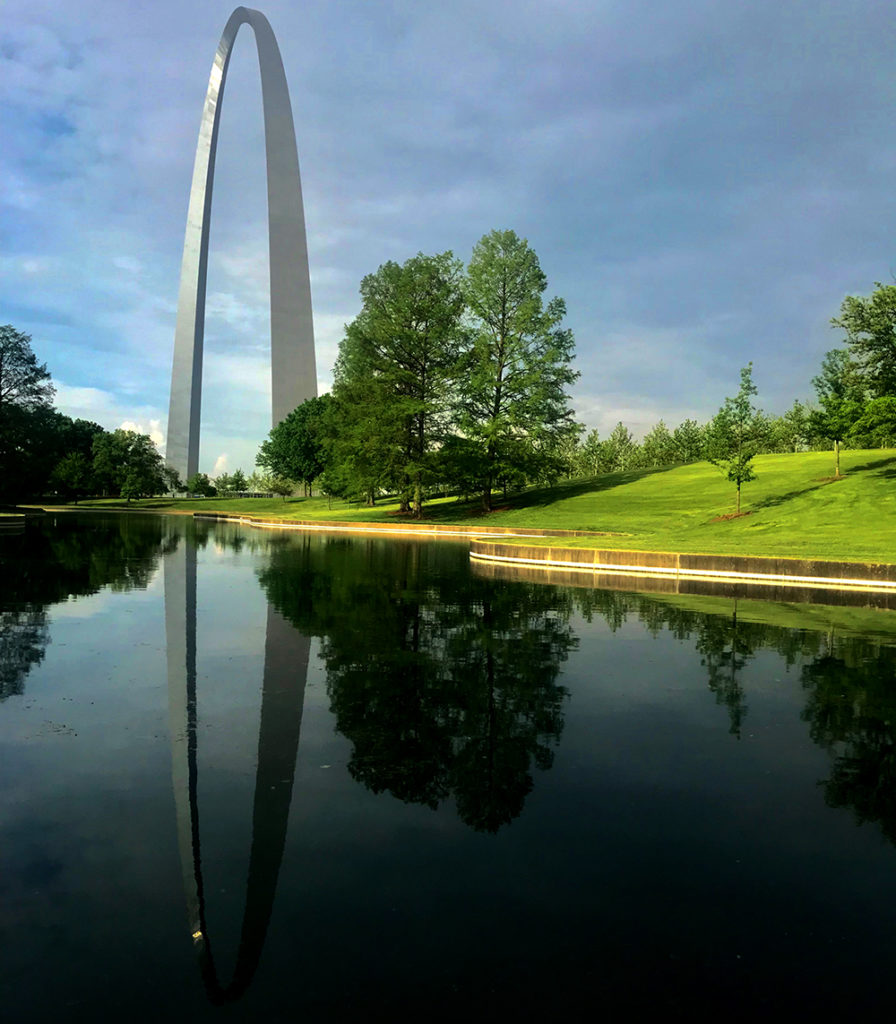
Obviously, the main attraction here is the arch, and any visit that does not include a tram ride to the top would seem incomplete. So grab a ticket and head on up. The Cold War-era pods that shuttle visitors to the top will likely be quite a trip to the younger crowd. These things seem like something out of a Buck Rogers comic book or television show from the mid 20th century.
The ride to the top takes a mere four minutes of weirdness and the decent is three minutes. The top section contains small windows that provide views of the St. Louis metro area and the Mississippi River. Up to 160 people can be in the top section at one time.
Gateway Arch National Park received a major remodel in 2018. The visitor center and the Museum at the Gateway Arch are now located right below the arch. You may wish to make this your first stop, however the Old Courthouse will likely be the first part of the park you encounter as you walk eastward toward the towering arch.
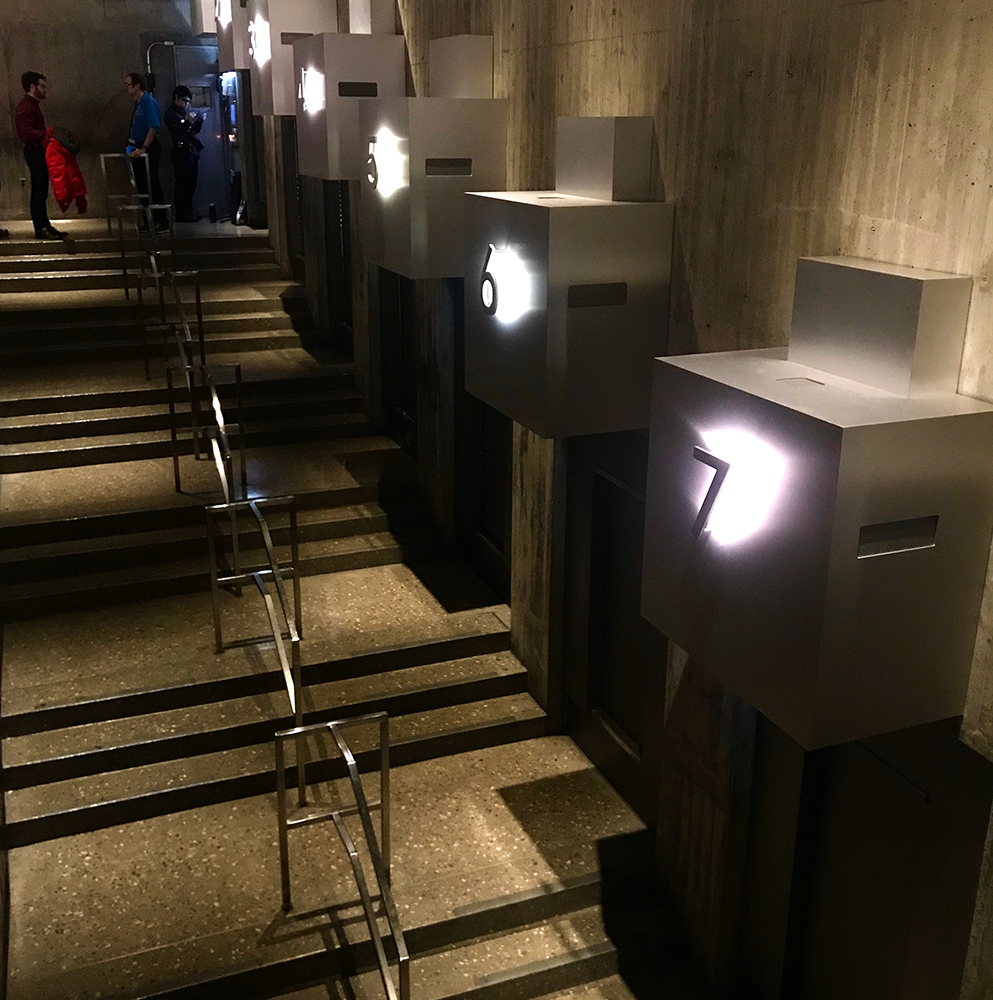
The Gateway Arch National Park Visitor Center and Museum is one of the more “secure” locations in the NPS system. TSA-like gates herd visitors through a security checkpoint and into the basement layer of the arch structure. Here guests can peruse the museum which is filled with information regarding the settlement of the west and the history of St. Louis and the Louisiana territory.
Touring the Old Courthouse is recommended. It is a beautiful piece of architecture that was built in the mid 1800s. The cast-iron dome is gorgeous against the skyline and the indoor rotunda features painted murals that include scenes of St. Louis’ history.
Inside, you can access the upper floors (up to the third) to see these murals more closely. The view downward is nice as well. Visitors can also check out the courtroom where the Dred Scott case was heard. Several exhibits explain the intricacies of the case and its importance in the years leading to the Civil War.

Riverboat tours are offered from the riverfront as well. Much of the city’s history is told during the cruise, which offers a nice vantage point from which to photograph the arch. Tickets for the riverboats can be combined to include a tram ticket to the top of the arch and a historical movie.
Parking in the area is limited and metered, but can often be found on Market Street, just west of the Old Courthouse along Kiener Square. There is street parking all around the area, but it may take a few minutes of driving around to find a spot.
Tickets to take the tram to the top of the arch can be purchased at the link below.
A Monument to Thomas Jefferson
Originally designated as the Jefferson National Expansion Memorial in 1935, during the administration of President Franklin Delano Roosevelt, the park’s original mission was to celebrate the memory of President Thomas Jefferson and to memorialize his efforts to facilitate America’s westward expansion.
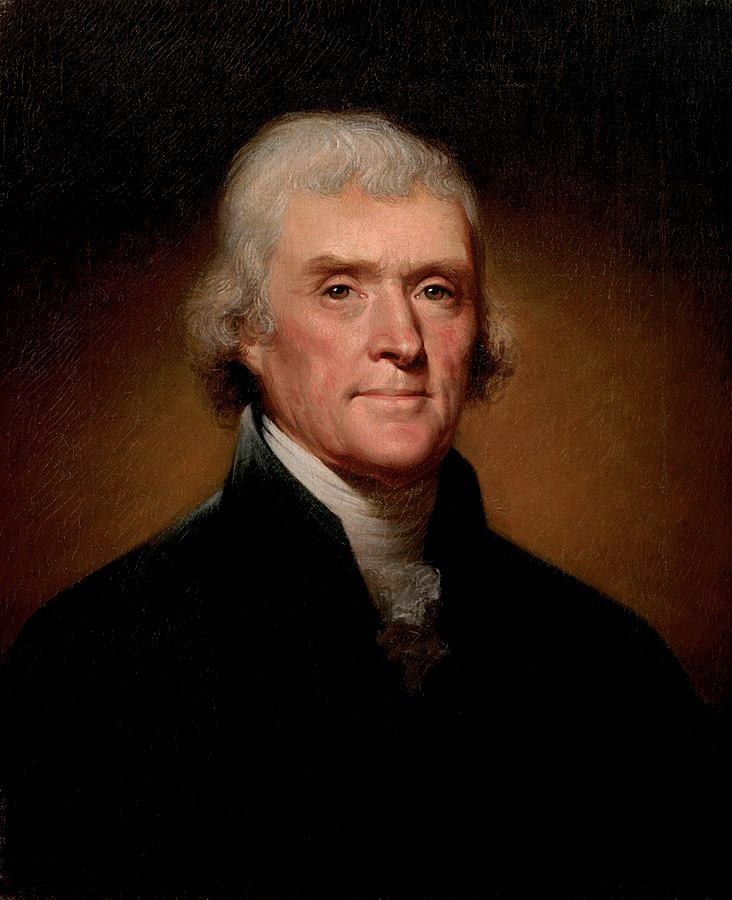
In many ways, Thomas Jefferson was individually responsible for America’s commitment to the Louisiana Purchase of 1803, despite quiet questions regarding the constitutionality of the action. The purchase doubled the size of the newly formed United States, and provided the young country greater access into western North America. Jefferson’s visions of westward expansion led to the famed Louis and Clark Expedition, which found a route to the Pacific Ocean in 1805.
Construction of the Arch
The idea for a St. Louis monument to the former President’s legacy gathered momentum initially thanks to the efforts of a local civic booster named Luther Ely Smith, who thought that a memorial here would bolster economic revenue along the riverfront and bring a sense of pride to the community, given its importance in the nation’s western history.
Smith proposed his plan to St. Louis mayor Bernard Dickmann, and in December of 1933, the idea was presented to city leaders, who quickly warmed to the suggestion, realizing the financial rewards of a more scenic city waterfront. In short time, the Jefferson National Expansion Memorial Association (JNEMA) was formed, with Smith acting as chairman.
Ideas for a riverfront facelift here were not new, as numerous attempts to redesign the area had previously failed due to lack of public support. This particular proposal however, offered an array desperately needed jobs as the nation languished in the throws of the Great Depression. Smith argued for his memorial at a time when numerous public works projects had already been administered in efforts to provide work for citizens, while bringing needed improvements to public parks across the nation.
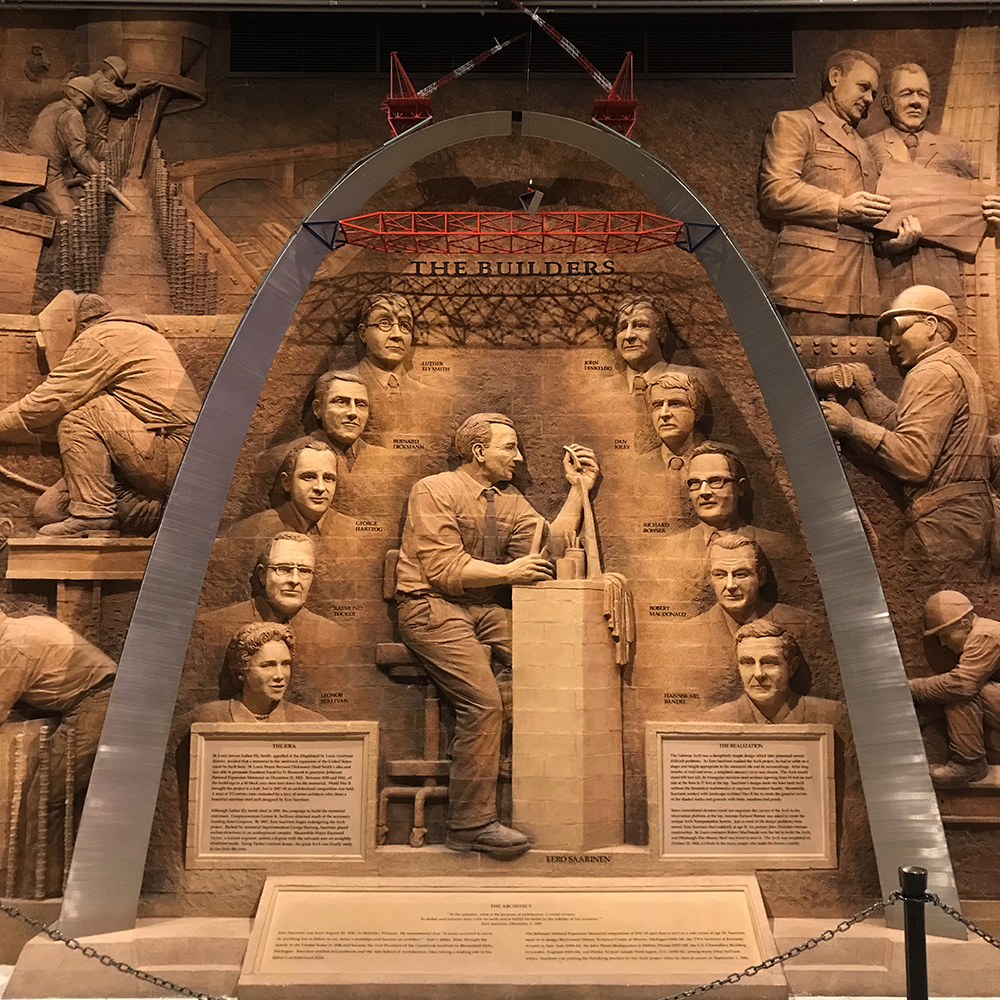
Smith and his associates were able to organize fundraisers and lobby Congress in order to solicit funds that would facilitate the memorial’s construction. After only months of bargaining, Smith and his Jefferson Association had the beginnings of a deal. In June of 1934, F.D.R signed a bill creating the United States Territorial Expansion Memorial Commission and the group got to work.
A short time later in political speak, December 21, 1935, President Franklin D. Roosevelt signed Executive Order 7253 which specifically approved the memorial, setting aside 82 acres as the nation’s first National Historic Site. In addition, the bill allocated nearly $6.75 million in federal funds to get the project off and running. Of course, nothing had even been built yet… or an arch even conceived.
Ironically, about the same time, plans began for the construction of the Jefferson Memorial, on the National Mall in Washington D.C. with F.D.R.’s 1934 inquiry to the Commission of Fine Arts regarding the erection of a monument to President Thomas Jefferson. That year, Congress created the Thomas Jefferson Memorial Commission, which chose John Russell Pope as chief architect. Pope was also the architect of the National Archives Building and the National Gallery of Art.
The Washington Mall’s Thomas Jefferson Memorial would see completion far before the Arch’s construction even began, with F.D.R. laying the cornerstone in November of 1939 and later dedicating the Jefferson Memorial on April 13, 1943, the 200th anniversary of Jefferson’s birth.

Meanwhile, back in 1930s St. Louis, JNEMA was in action, grabbing up riverfront land through condemnation and eminent domain and fighting lawsuits from irate landowners, while at the same time, seeking architectural ideas, and an architect who could see them through.
A two-stage architectural competition was proposed to determine what sort of “memorial” would be constructed. It was decided that a seven-member council would judge designs that would provide a “living memorial to Jefferson’s vision of greater opportunities for men of all races and creeds” among other criteria.
The judging panel reviewed 172 separate submissions in the first round, which would narrow the field to 5 finalists. Among the finalists was Eero Saarinen, a Dutch born architect and modernist furniture designer, whose drawing of a great, yet simple catenary arch was returned with comments from the panel such as “relevant, beautiful, perhaps inspired would be the right word” and “an abstract form peculiarly happy in its symbolism”.
In his submission to the contest’s second stage, Saarinen reworked the height of the arch and wrote that it symbolized “the gateway to the West, the national expansion, and whatnot”. He indicated that he wished for the landscape surrounding the arch to be densely covered in trees, to provide a “green retreat from the downtown city”.
In February 1948, Saarinen’s design was chosen unanimously and praised for its “profoundly evocative and truly monumental expression”.
The structure’s classic simplicity is often noted, and indeed, it represents one of the simplest of all geometric shapes. A catenary arch is made of a catenary curve, which is defined as a curve that an idealized hanging chain or cable makes under its own weight when supported only at its ends.

Imagine a necklace suspended from two points, if no pendant is attached to the necklace, its natural form will fall into a classic catenary arch. In fact, Thomas Jefferson himself seemed quite fond of the structure, writing in a 1788 entry that “every part of the catenary arch is in perfect equilibrium”.
It took some time to finalize the details regarding the actual construction of the arch. More than ten years passed in fact, before construction even began. A somewhat troublesome length of railroad tracks would have to be moved, or tunneled, then buried which was the decision in the end.
Of course, further funding would need to be secured, as the originally allocated funds had long before been extinguished thanks to those costly eminent domain procedures that essentially emptied coffers that had been set aside in 1934. Actual construction of the arch would run in excess of $13 million dollars, or more than $200 million by 2019 dollars.
In 1959, ground was finally broken for the Jefferson National Expansion Memorial. Actual construction of the arch began in February of 1963 as the 142 separate 12-foot-long steel triangles that make up the arch’s base and span were carefully placed by cranes and derricks.
Finally, on October 28, 1965, some 32 years after Luther Ely Smith first conceived the idea for a memorial to Thomas Jefferson, after countless funding and logistical delays and after numerous canceled completion ceremonies, the final piece, the keystone, was laid in place. The 10 ton, 8-foot-long triangular section of steel was placed atop the 632-foot-tall arch and was secured by noon while Vice President Hubert Humphrey observed from a hovering helicopter.
The arch’s interior was still not complete however, as a steel stairway provided the only access to the top via a set of 1,076 steps that were not open to the general public. Soon however, according to plans, there would be two trams that would usher eager guests to the top of the arch for a bird’s eye view of the city from the 32 small windows that run the length of the top section.
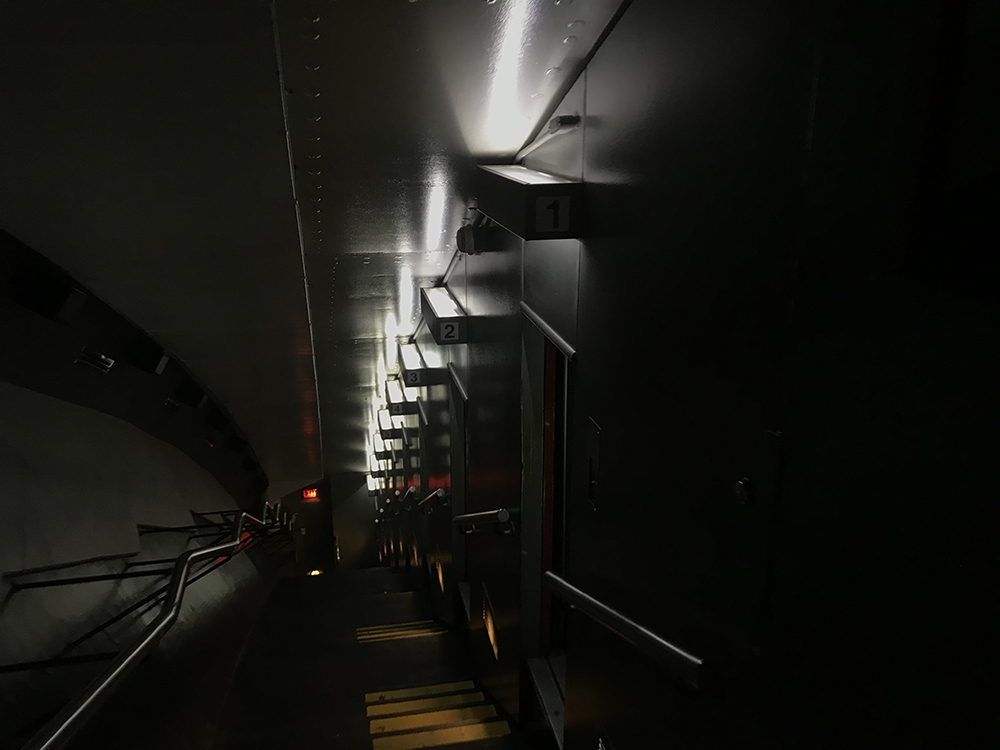
The visitor center opened on June 10, 1967 and the north tram began operation on July 24 of the same year, while the south tram took another year to finish. The arch was finally dedicated by Vice President Hubert Humphrey on May 25, 1968 during a ceremony in which the politician described the arch as “a soaring curve in the sky that links the rich heritage of yesterday with the richer future of tomorrow”.
Today, the arch remains the tallest human-build monument in the US and receives nearly 1.5 million visitors annually. The arch is built to withstand storms and earthquakes and can sway up to 18 inches during such times. From the top, guests can see distances of nearly 30 miles on clear days.
In 2018, the NPS completed improvements to the park, that included building a new visitor center and museum under the arch, as well as constructing a crossway above Interstate 44, which previously separated the Arch and the Old Cathedral from the Old Courthouse.
More Than Just an Arch
Over time, the park has became more than a simple shout out to TJ and his westward dreams. Today, the park’s mission celebrates a number of historical occurrences stretching back to the Revolutionary War.

This midwestern city marked the westernmost battlefield of the war for independence in the Battle of St. Louis in 1780, which saw a combination of Spanish, French, and American forces successfully defend a single 40-foot tower, dubbed Fort San Carlos, from British led forces that included fur traders and members of various Indian tribes.
The spirit of the memorial also recounts the largely unknown ceremony of Three Flags Day, in May of 1804, which was a strictly ceremonial transfer of the Louisiana Territory from Spain, to France, and then to the United States.
Although the details of the Louisiana Purchase were effectively solidified in April of 1803, technical details regarding the deal took some time. Spain had never actually given France title to the land which Napoleon Bonaparte had quietly acquired in 1800 with the Third Treaty of San Ildefonso. With the French and U.S. agreement for the Louisiana Purchase, the business between Spain and France would need to be completed.
While the necessary transfer of title had already been conferred in New Orleans, with Spain handing control to France on November 30, 1803 and subsequently France yielding ownership to the U.S. on December 20 of the same year, winter weather prevented the news from moving up the Mississippi River. Thus word of the transfer did not reach St. Louis till the spring of 1804.
When news of the sale reached St. Louis, it was decided that Spain would relinquish its control to France through the lowering of the Spanish flag on March 9, 1804, and that the French flag would fly for 24 hours. On the morning of March 10, the French flag would be lowered and the American flag was hoisted in a location where it still remains some 300 years later, over the city of St. Louis, in what is today, the state of Missouri.
This event is referred to today, as Three Flags Day and more about this can be found in the Museum at the Gateway Arch, directly below the arch.
Dred Scott
As is the case in many of our nation’s historic sites, not all of the history preserved here revels in victory or in notable achievement. Much of our history is in fact, quite ugly at its core. This park reminds us of this with the inclusion of the Old Courthouse, a building which looms dark in American history.
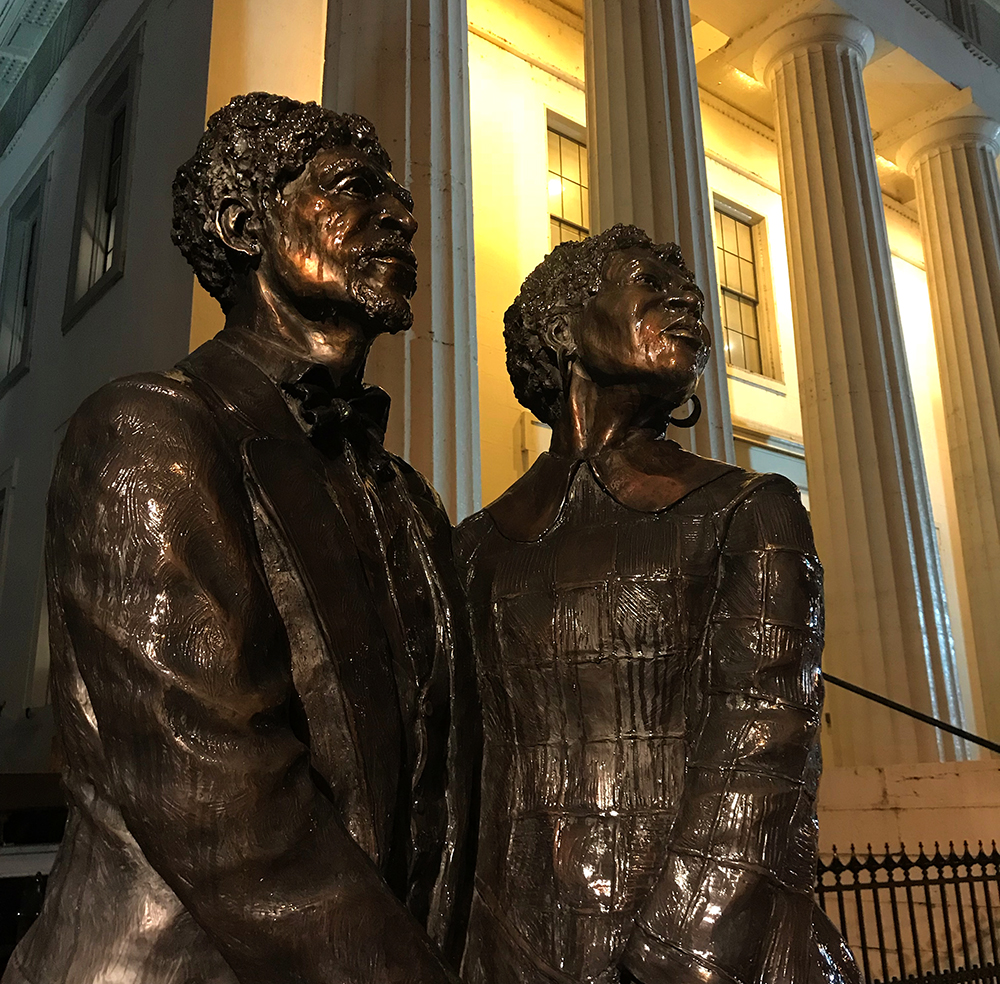
One of the more important legal cases regarding the issue of slavery was first argued in St. Louis’ Old Courthouse, when in 1846 the family of Dred and Harriet Scott initiated a lawsuit for their freedom. At the time, their particular case was hardly noteworthy, as more than 200 such suits were brought before the legal machine in this courthouse. Theirs would however, come to play a pivotal role in the events leading up to the Civil War, which would less than 20 years later, bring the death of more than 600,000 young American men.
Dred Scott was a slave who had been taken in 1836 from Missouri, a slave state, to Fort Armstrong in Illinois, a free state, by his owner, Dr. John Emerson, who was a surgeon in the US Army. The next year Scott was taken to Fort Snelling in the Wisconsin Territory, also a free territory. While in Wisconsin, Scott met another slave, Harriet Robinson, who became his wife in a ceremony presided over by Lawrence Taliaferro, Robinson’s owner.
In 1840, Emerson returned to Missouri with the Scotts, retired from the Army and died in 1843. The Scotts were inherited by his widow, Irene. In 1846, Dred Scott attempted to purchase he and his family’s freedom for $300, about $8,000 today. Irene refused the offer, prompting Scott to legal recourse.
Scott v. Emerson was first brought before the court in 1847, and brought a verdict against Scott. However the judge called for a retrial and in 1850, a jury handed down a verdict in favor of the Scotts, granting them freedom as Missouri had unofficially supported a “once free, always free” doctrine regarding the issue of slavery. Of the more than 200 such cases heard in the state’s courts, freedom was granted in more than half when previous residency in a free state could be proven.
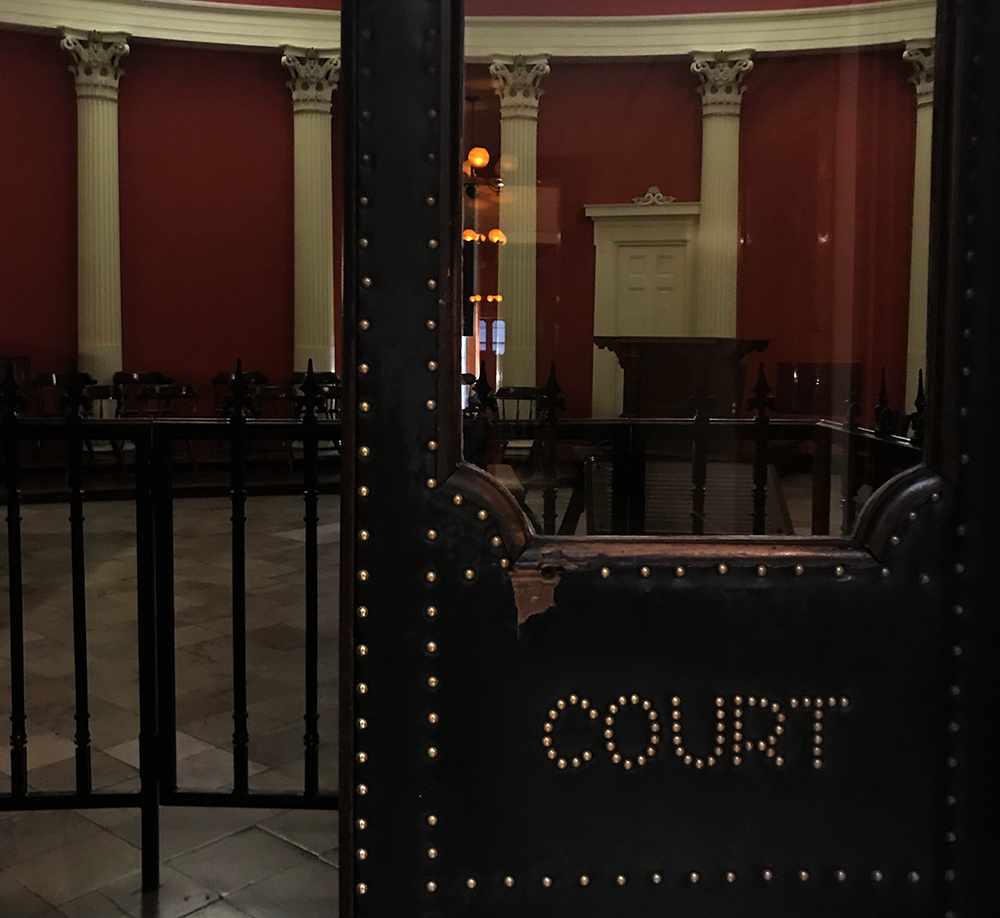
Irene Emerson appealed the decision however, and two years later the Missouri Supreme Court reversed the lower court decision, writing that “Times now are not as they were when the previous decisions on this subject were made”.
The Scotts brought another case, against John F. A Sanford, who was Irene Emerson’s brother and the executor of her estate. This time, the case went to a federal court as Sanford was a New York resident. The Scotts lost here as well and the case was appealed to the US Supreme Court. In 1857, Justice Roger Taney and the high court reached a verdict.
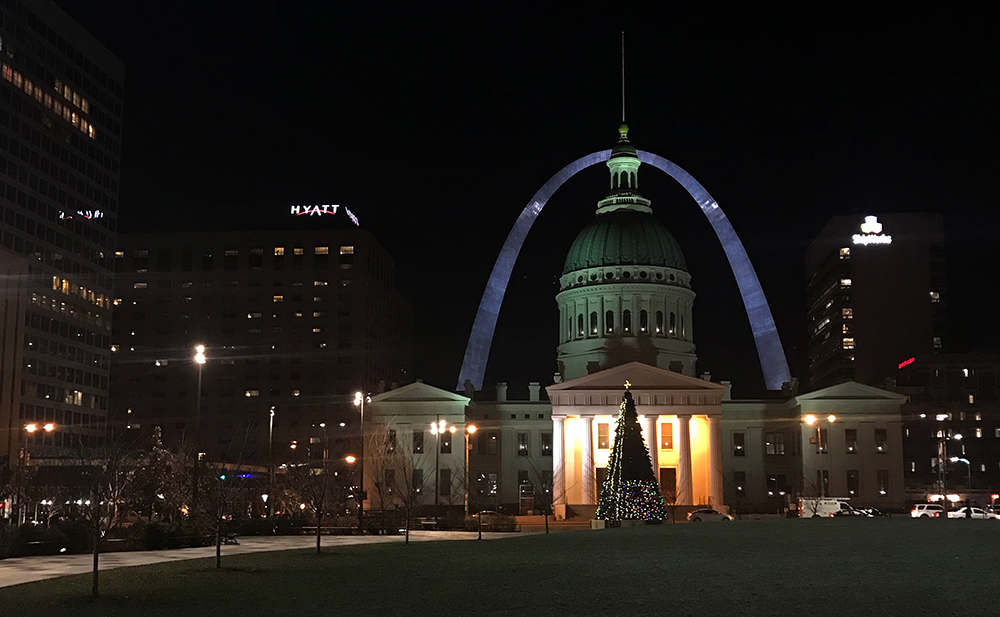
Taney wrote that since the Scotts were of African decent, they could not be US citizens and therefore could enjoy no rights of citizenship. The Scotts would remain enslaved.
Furthermore, the court struck down as unconstitutional the Missouri Compromise of 1820, which forbade slavery in the Wisconsin Territory. This was essentially a sanctioning of slavery by the US Supreme Court. This led rapidly to an incensed movement to do something about the controversial issue, and a bloody war between brothers would ensue four years later in 1861.
Women’s Suffrage
The Old Courthouse was also home to an important case in the battle for women’s suffrage, just as the movement was gaining traction in the late 19th century.
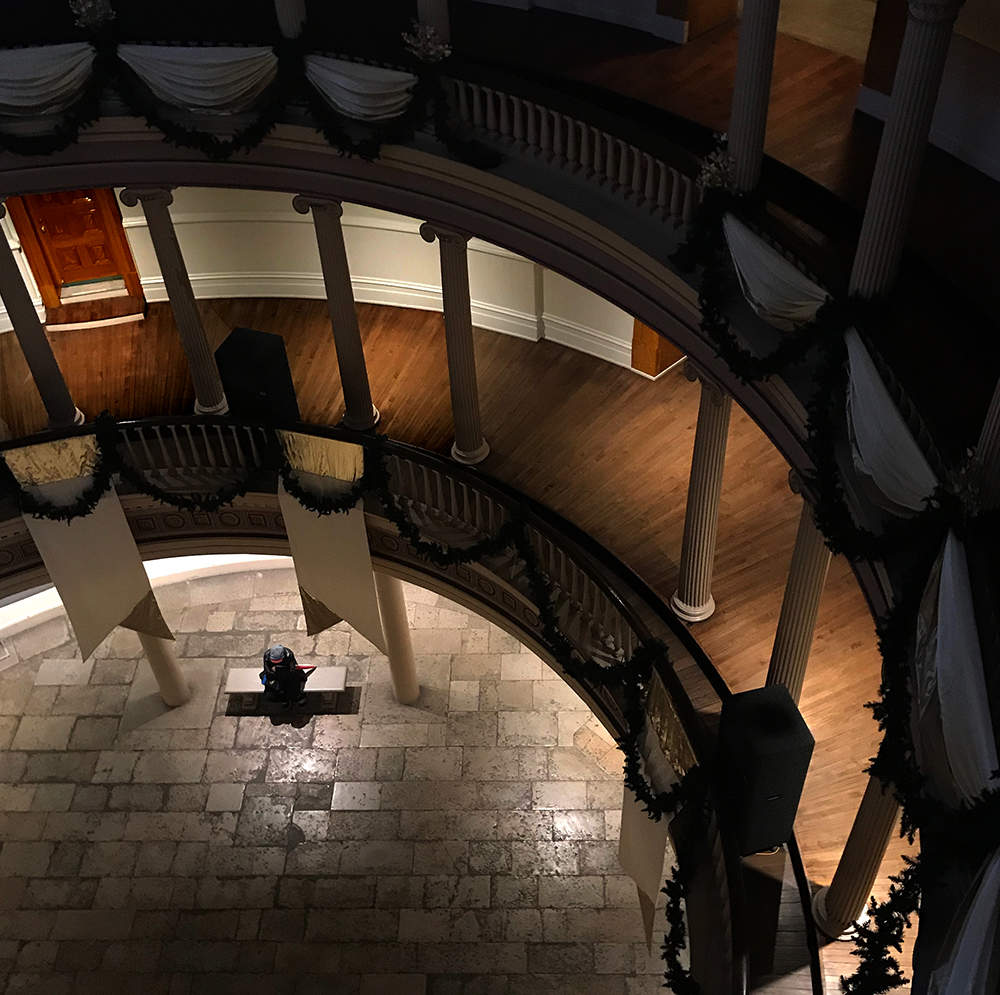
In October of 1872, activist Virginia Louisa Minor sued for the right to vote in Missouri elections. In a case that would eventually reach the U.S. Supreme Court, she argued that the 14th Amendment to the US Constitution guaranteed that not only citizenship, but also voting rights were extended to women.
Both the St. Louis court, and two years later, the Supreme Court disagreed. Chief Justice Morrison Waite wrote in a unanimous 1874 Supreme Court decision:
“all the citizens of the states were not invested with the right of suffrage…” and that “the Constitution of the United States does not confer the right of suffrage upon anyone…”
With this case, the high court left the decision of who could vote up to individual states. While this was considered a setback it proved to be simply another battle in the war for women’s suffrage, which would prove worthy of the effort. The addition of the 19th Amendment to the US Constitution in 1920 finally granted women the right to vote on a national scale.
A New National Park
The idea of national parks is constantly evolving, and indeed, the guidelines for what exactly constitutes a national park are, and should be, debated in order to bring a well-contemplated idea to any form or adequate fruition.
That said, the dedication of Gateway Arch National Park in February of 2018 set off a firestorm of opinions about what a national park should be, and furthermore, what a national park should not be.
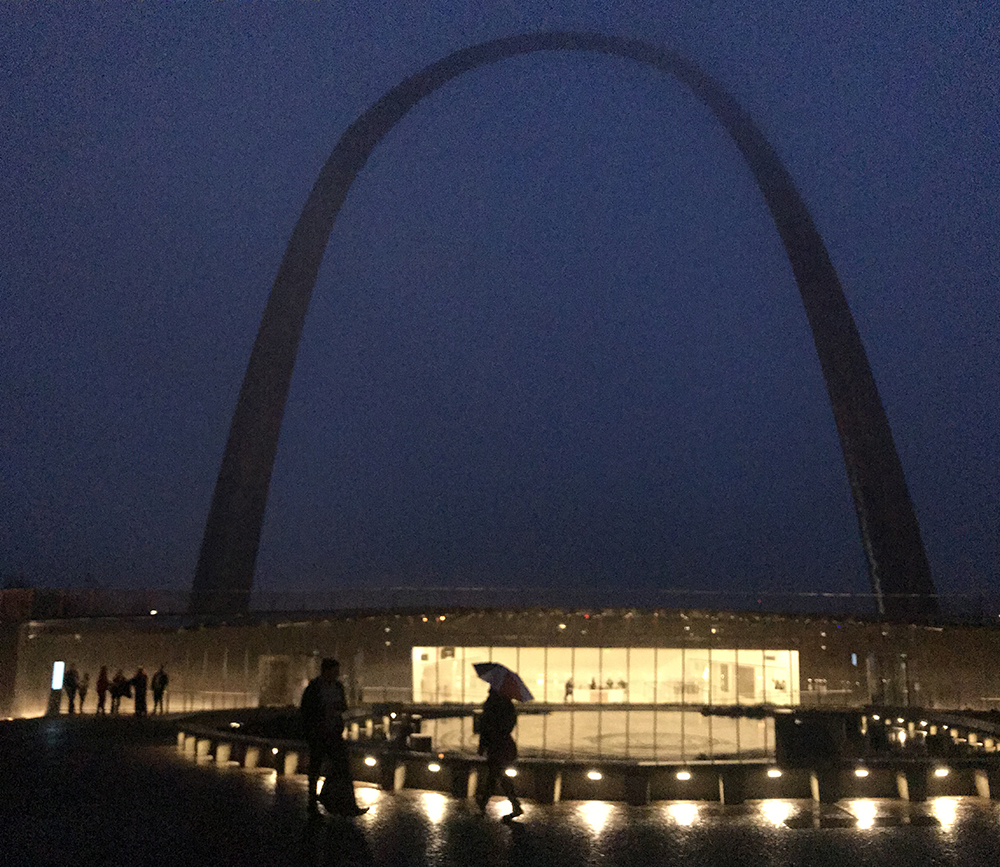
Park Junkie Verdict
As was stated earlier, this national park was not approved without considerable public disapproval. Of course, many wanted this park, such as the senators from Missouri that brought the bill to name it a national park before Congress. Many Park Junkies seem discouraged by the move, as it is seen by many to denigrate the idea of national parks as areas of incredible natural wonder.
Nevertheless, this is now a national park, one of 63 set aside for the “benefit and enjoyment of the people” and it does hold a place in our nation’s history. So of course, true Park Junkies would visit this place anyway.
Although it may seem an out-of-place addition to the club, it is now Gateway Arch National Park… I’ve been many times… & while it is not the pinnacle of my national park exploration, I enjoyed the experience…
See ya there…
Guide to Gateway Arch
Relevant Links
National Park Guides

All content found on Park Junkie is meant solely for entertainment purposes and is the copyrighted property of Park Junkie Productions. Unauthorized reproduction is prohibited without the express written consent of Park Junkie Productions.
YOU CAN DIE. Activities pursued within National Park boundaries hold inherent dangers. You are solely responsible for your safety in the outdoors. Park Junkie accepts no responsibility for actions that result in inconveniences, injury or death.
This site is not affiliated with the National Park Service, or any particular park.
